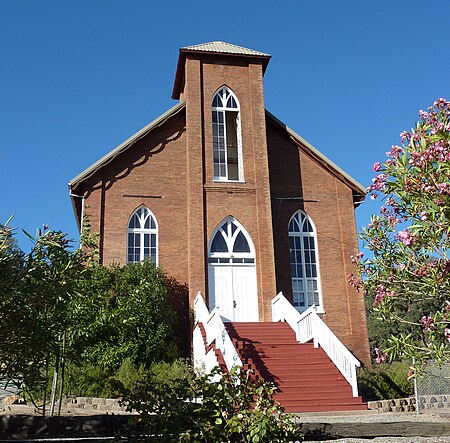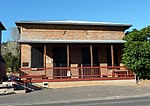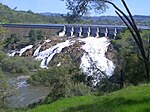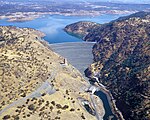Copperopolis Congregational Church

Copperopolis Congregational Church (also known as Copperopolis Community Center) is a historic church building at 411 Main Street in Copperopolis, California. The church was built in 1866 and designed in the Gothic Revival style; it is the only Gothic Revival building remaining in Copperopolis and one of two in Calaveras County. The brick church features a Gothic arch entrance and windows, a gable roof, and a bell tower. The church held Congregational services until it was leased to the Presbyterian Church; it became a Congregational church again in 1874 and remained so until 1895. In 1903, the Independent Order of Odd Fellows bought the church and converted it to a lodge hall. The Odd Fellows owned the church until 1939, when it became a community center.The church was added to the National Register of Historic Places on December 30, 1997.
Excerpt from the Wikipedia article Copperopolis Congregational Church (License: CC BY-SA 3.0, Authors, Images).Copperopolis Congregational Church
Main Street,
Geographical coordinates (GPS) Address Nearby Places Show on map
Geographical coordinates (GPS)
| Latitude | Longitude |
|---|---|
| N 37.979722222222 ° | E -120.63777777778 ° |
Address
Main Street 407
95228
California, United States
Open on Google Maps





